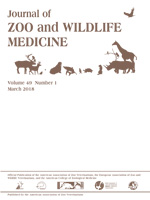The Siberian flying squirrel (Pteromys volans) produces up to two litters a year. To deliver second litters in breeding season, P. volans may have a postpartum estrus similarly to that of a variety of small mammals. If this were the case, females would have periods of elevated progesterone levels because of the formation of corpora lutea (CL) after postpartum ovulation. To test this hypothesis, fecal progesterone metabolite dynamics was investigated during lactation in this species using an enzyme immunoassay. In five of the six lactating females, periods of high fecal progesterone metabolite concentration were observed, and, furthermore, progesterone secretion patterns were periodic. Therefore, the source of progesterone during lactation could be arising CL from postpartum ovulation, indicating that ovarian activity was reinitiated after parturition and the CL that formed began secreting progesterone. This study thus showed that P. volans likely has the physiologic potential to mate during lactation.
How to translate text using browser tools
1 March 2018
FECAL PROGESTERONE METABOLITES IN POSTPARTUM SIBERIAN FLYING SQUIRRELS
Tatsuki Shimamoto,
Kei K. Suzuki,
Mizuho Hamada,
Ryuji Furukawa,
Motozumi Matsui,
Hisashi Yanagawa
ACCESS THE FULL ARTICLE
enzyme immunoassay
fecal progesterone metabolites
postpartum ovarian cycles
reproductive strategy
Siberian flying squirrel (Pteromys volans)





